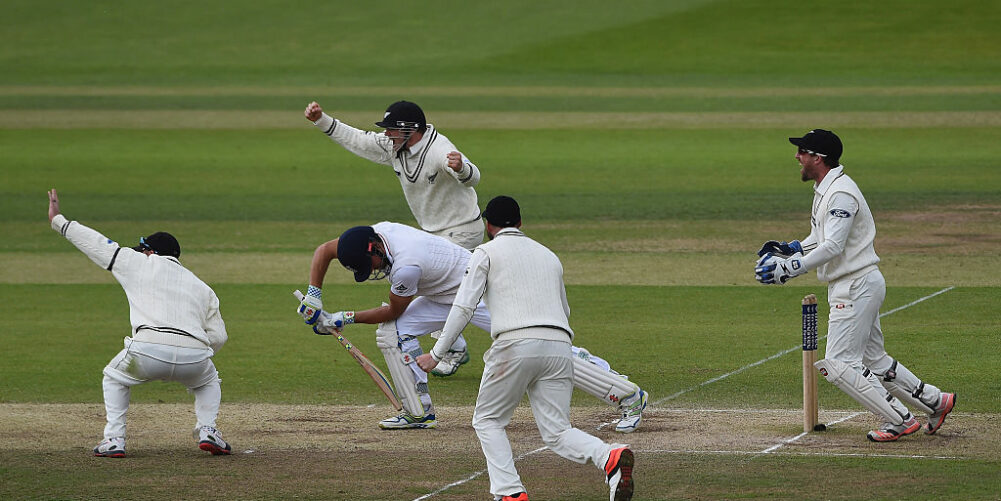By Tim Wigmore
Imagine a league with nine teams. There isn’t time for everyone to play everyone else home and away; there isn’t even time for everyone to play everyone else home or away. Instead, each team plays three sides at home, and three others away. And these series aren’t even of equal length, either: some are as many as five matches, and some as few as two.
Sounds terrible, doesn’t it? Welcome to the new World Test Championship, which will launch with the Ashes next year. That will be a five-match series, of course – but winning a two-match series 2-0 will earn a country as many points as winning the Ashes 5-0.
These plans are a product of the compromises inherent in everything that the International Cricket Council does. The sport’s governing body, you see, is rarely actually granted the power to govern, and is instead at the whims of what the Full Members actually want to do.
When the ICC’s chief executive David Richardson advocated two divisions – of seven nations and five – with promotion and relegation – between the two, boards, including India, opposed the concept, and that was that.
Later there was talk of conferences – two parallel leagues of six, culminating in a final. After these ideas failed, the World Test Championship was finally voted through: with a structure designed not to offend countries, or have them fretting about relegation if they performed poorly on the pitch.
Bringing structure and context to Test cricket has been like the weather: everyone talks about it, but no one ever does anything about it. Indeed, plans for a league structure have periodically been discussed in ICC meetings since the early 2000s.
Everyone recognised that the current system is rotten – because it isn’t even a system at all. Instead, which fixtures a country gets is governed by a combination of their financial clout (which is why the Big Three play each other so much) and their success politicking (which is why Sri Lanka have played India so much).
What happens if a side wins or loses? Really, nothing at all. England’s current abject run of six defeats and no victories in eight Test matches, for instance, is having zero bearing on their fixture list or the money they receive from the ICC.
They are, of course, sliding down the rankings, but even these have very limited relevance. And the team prize for being number one – $1 million – is puny in light of the sport’s current economic state.
Conversely, consider the case of smaller countries who rise in Test cricket. What do they get for doing so? Absolutely nothing. In 2013-15, New Zealand went a national record seven Test series undefeated, during which they bested India at home and were thrilling tourists to England in a two-Test drawn series in 2015. At the time, Mike Hesson, New Zealand’s coach, said his side had “earned the right” to play longer Test series.
Well, they would have done had Test cricket had any sort of structure. After such a fine run, they would also have had the chance of winning a marquee prize – like winning a World Test Championship, say – rather than just bumbling along.
One of the sadnesses of Test cricket in its current guise is most countries who play it, and most players, are denied the chance to even aspire to the pinnacle of the sport. New Zealand could win every Test, but it would not change their diet of endless two-match series, shoehorned into when the Big Three had a little time to play them.
All of which is why the new World Test Championship, for all its flaws, is an excellent and overdue idea. One of Test cricket’s weaknesses is that – unlike every other international sport – it has lacked a showpiece event accessible to all; instead, its showpiece events, like the Ashes, have been based on history and exclusivity, not being open to all on the basis of merit.
Next year, that will begin to change.

If New Zealand are able to replicate their form from 2013-15, they will get the chance to play in the World Test Championship final – and even win the thing. It is just possible that the allure of such a prize could incentivise the best international players to play on in Test cricket even when – outside the Big Three – it is not in their economic interests to do so.
A league system – even one drawn out over two years, which again is clearly suboptimal – might result in a small uptick in viewing figures too, and will give a new reason for fans to follow Tests involving other nations, which will now affect their prospects of reaching the World Test Championship final. Most importantly of all, once the World Test Championship has been launched, so it can be tinkered with and improved.
As a concept, the World Test Championship is brimming with imperfections. Yet, more than any of these, what matters is that it’s a start in giving Test cricket more meaning and encouraging more people to watch.












